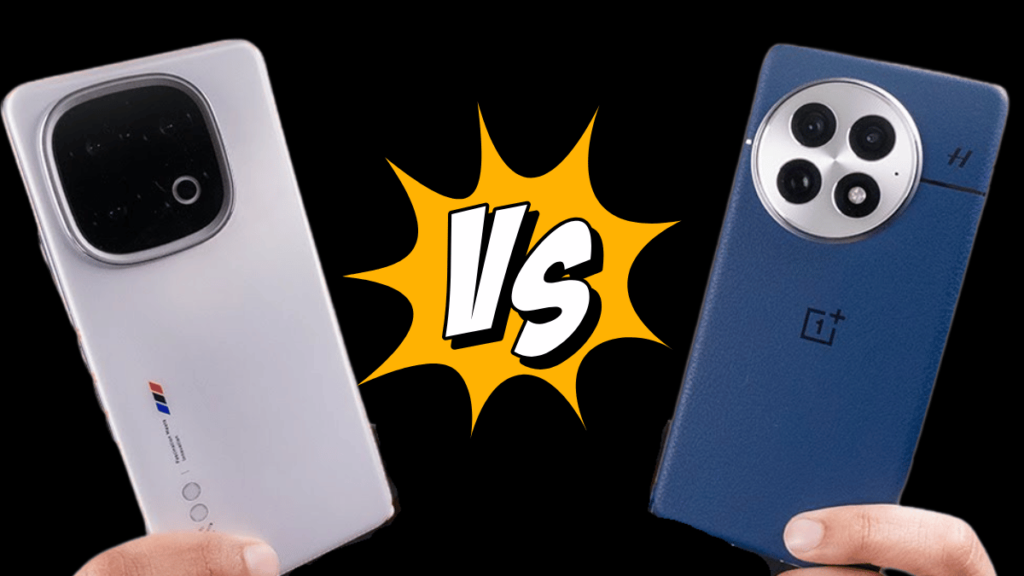OnePlus 13 vs iQOO 13: A detailed comparison of two powerful smartphones. Which one offers the best value, performance, and features in 2025? Find out now!
In this article, we compare the OnePlus 13 with the iQOO 13 to see how the two smartphones stack up against each other. We cover all of the important aspects such as design, display, battery life, software, performance, and camera to understand if the price difference is justified.
Design
Both the OnePlus 13 and iQOO 13 are quite similar in design. Both phones have the latest ultrasonic fingerprint scanners, and they both support USB 3.3.2, an improvement over previous models. OnePlus has always been known for its premium build quality, and this year, both phones are quite similar in features and feel.
Display
When we talk about the display, both phones feature AMOLED panels, providing vibrant colors and sharp visuals. The screen size and resolution are similar, but there are slight differences. The iQOO 13 has a peak brightness of 1800 nits, which makes it better for direct sunlight usage compared to the OnePlus 13. However, outdoor visibility is fairly comparable between the two phones. Both offer excellent brightness levels, especially when using them outdoors.
Battery Life
Battery performance is pretty similar on both phones, though there is a slight difference in charging speeds. The iQOO 13 supports 120W wired charging, which is faster than the OnePlus 13. However, the OnePlus 13 offers great battery life with roughly 9 hours of usage. Both phones perform excellently in terms of wireless charging and battery endurance.
Performance
Both the OnePlus 13 and iQOO 13 use the same Snapdragon chipset, which means they are both capable of handling demanding tasks with ease. In benchmarks, both phones performed similarly, and I tested them on a popular racing game, where the FPS performance was very comparable. However, the iQOO 13 showed slightly better stability in some heavy games like Call of Duty. Despite this, both phones are equally capable when it comes to overall performance.
Software
Software performance is another key area where the two phones have similarities and differences. The OnePlus 13 uses OxygenOS, while the iQOO 13 runs Funtouch OS. Both operating systems offer smooth user experiences with AI-enhanced features like global search and photo optimization. However, OnePlus generally offers better long-term software support, with more frequent security updates.
Camera
In terms of camera, both phones are equipped with solid setups. The iQOO 13 features a 50 MP primary sensor, while the OnePlus 13 also has a similar camera configuration. The iQOO 13 excels in photography with its 2x optical zoom lens, while OnePlus 13 offers a larger sensor for better low-light shots. Both cameras offer excellent performance in daylight conditions, though OnePlus tends to capture more detailed shots, especially with its wider lens.
When it comes to selfies, both phones feature a 32 MP front camera, but the iQOO 13 seems to perform slightly better in harsh lighting conditions. The video quality on both phones is impressive, offering smooth recording with great detail and clarity.
Conclusion
Both the OnePlus 13 and iQOO 13 are highly capable smartphones, with each offering some advantages over the other. The OnePlus 13 is priced higher, but it justifies the premium with slightly better camera performance, a larger sensor, and a more refined design. On the other hand, the iQOO 13 offers more value for money with fast charging and overall good performance.
If you’re looking for a great smartphone at a reasonable price, the iQOO 13 might be the better option. However, if you’re looking for slightly better camera quality and more premium features, the OnePlus 13 will be worth the extra cost.




Pingback: A Complete Review of the iQOO 13: Real-World Experience - sharely.site